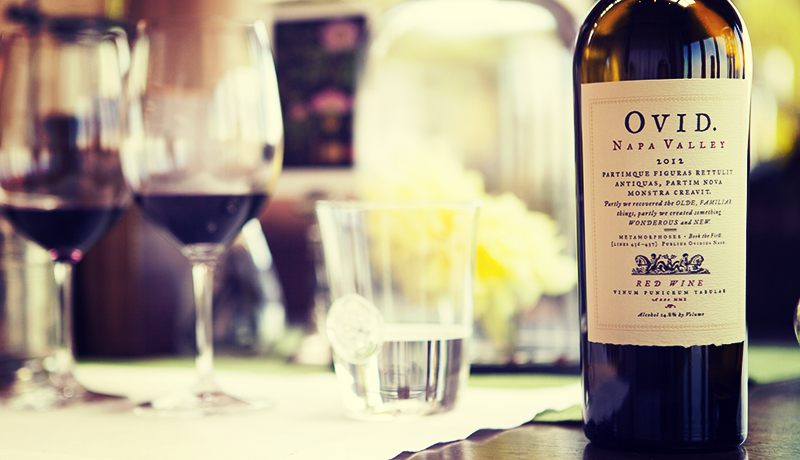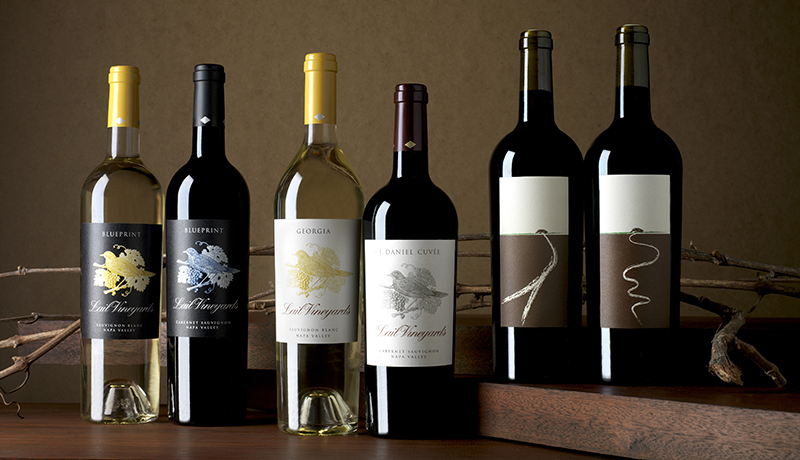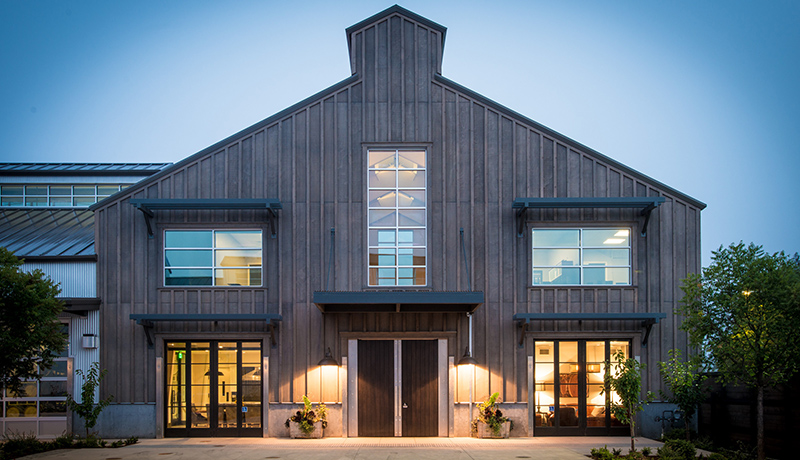

One Of Napa’s Most Prized Labels, Photo Credit: Ovid Napa Valley
At Auction Napa Valley in 2000, history was made when a six-liter bottle of Screaming Eagle cabernet sauvignon, the 1992 vintage, was sold for $500,000. It became the most expensive single bottle of wine ever sold and instantly turned the winery into an overnight sensation.
Since then, Screaming Eagle has become one of the most well-known cult wineries — vineyards that produce a limited amount of wines that are sold for a high price to collectors. Cult wineries often have year-long wait lists for their bottles and, once a wine lover finally gets admitted to the club, he should be prepared to pay big for a small selection.
According to Janet Pagano, the managing partner of Ovid Vineyards, the elements that result in a winery with a wait list, “first and foremost, has to do with a really distinctive vineyard. And that distinctiveness is expressed in the character of the wine, the farming and the winemaking are also an extremely high level. It’s the attention to detail that makes a difference. Also the reputation of the winemakers and whomever is doing the farming is significant.”
Another winery on the same level of exclusiveness as Screaming Eagle is Harlan Estate, whose 10-vintage vertical selection of magnum bottles sold for $700,000 at the same 2000 auction.
Stag’s Leap Wine Cellars is another Napa-based producer with a rabid following. In 1976, its cabernet sauvignon won the Judgment of Paris, a blind tasting that solidified California as a top winemaking region on the global vino map. Stag’s Leap’s Club Connoisseur, its highest level of membership, includes four shipments per year, but what you get depends on what is available.
This, of course, is one of the downfalls of a cult winery: you don’t get to choose what you’re getting; you simply have the chance to purchase what is allocated to you at release time. While these rare labels can be yours for exorbitant amounts at charity functions, with a little savvy knowhow and some patience, you can score yourself a cult bottle of California wine.

Lail Vineyards, Photo Credit: Lail Vineyards
Start by seeking out lesser-known producers like Lail Vineyards. Unless you’re a Napa Valley insider, you’ve probably never heard of Robin Lail. However, as the daughter of Inglenook’s former owner, John Daniel Jr., she’s practically wine country royalty.
Lail also has quite the impressive resume that includes cofounding Dominus and Merryvale vineyards, serving a stint as general manager at Forbes Travel Guide Four-Star Meadowood Napa Valley and the personal assistant to Robert Mondavi, who also was her mentor.
Today, Robin oversees the team at Lail Vineyards. The family-owned operation is run by renowned winemaker Philippe Melka and makes less than 4,000 cases annually. Lail offers several tiers of club membership with the most coveted being the Robin’s Nest, a group with just 200 members. For $3,000 per year, you’ll receive six bottles of sauvignon blanc and nine of the famed cabernet sauvignon.
Although obtaining membership to these clubs involves a wait list, you do eventually gain access.
“Say you sign up for a list and two years go by and we’re able to make an offer to you,” Pagano says. “We prioritize by seniority. Even if you become a new mailing list customer, you’re probably not going to get the wine offered to you in the first round, so the people who have the greatest longevity are the ones who receive their offers first. It’s on a first-come, first-serve basis. However, in any given year, we may have customers who miss the offer or skip an offer and then we’re able to offer that wine to someone who hasn’t had the opportunity before.”
At Ovid, Pagano and her team sell 85 percent of the Pritchard Hill estate-grown wine directly to the consumer. The beautiful tasting room sits on top of the hill with a stunning view of the valley. The wine is made with the utmost care with a thoughtful gravity-flow, green-certified process that allows the grapes to flow directly from harvest trucks into fermentation tanks that are neatly nestled underground.
Ovid has more than 1,000 people on its waiting list, most of whom hear about the brand through word of mouth. “The primary benefit of a wait list is that it gives us the opportunity to get to know our customers and form a relationship with them,” she says. “It’s mutually enriching, so it certainly adds a lot of satisfaction for us to know our customers — and they’re amazing people — and we really have enjoyed that. And I think that makes a difference for them as well.”

Kosta Browne Winery, Photo Credit: Kosta Browne Winery
While the majority of cult wineries specialize in cabernet sauvignon, the Sebastopol-based Kosta Browne Winery makes one of the most sought-after California pinot noirs. Topping out nearly $90, Kosta Browne’s reds are significantly lower in price than those at Lail and Ovid, however, getting your hands on a bottle is just as difficult.
Kosta Browne was founded in 1997 by two buddies who didn’t have much experience in the wine industry and still joke that their venture was an overnight success that took eight years to make.
The list is limited to 2,000 people and it takes about two years of waiting before you’ll get a chance to make a purchase. High attention to detail — think custom tanks and fermenters — ensures the best quality wine is produced. Sip on one of the pinots and you’ll taste pure opulence: there are no distractions, it’s smooth without any edges and it’s wildly pleasurable.
How do the wineries keep impatient drinkers interested? “Our hope is that our customers will have an ongoing interest in our wines,” Pagano says. “We do try to set a little bit of wine aside at the winery to satisfy people who come here for a tour and tasting experience. But we’ve all prioritized those, and people who are on the mailing list we try to accommodate first and foremost.”
